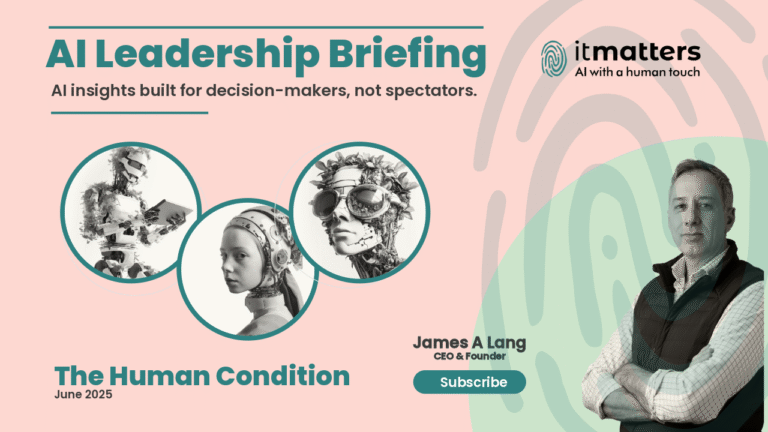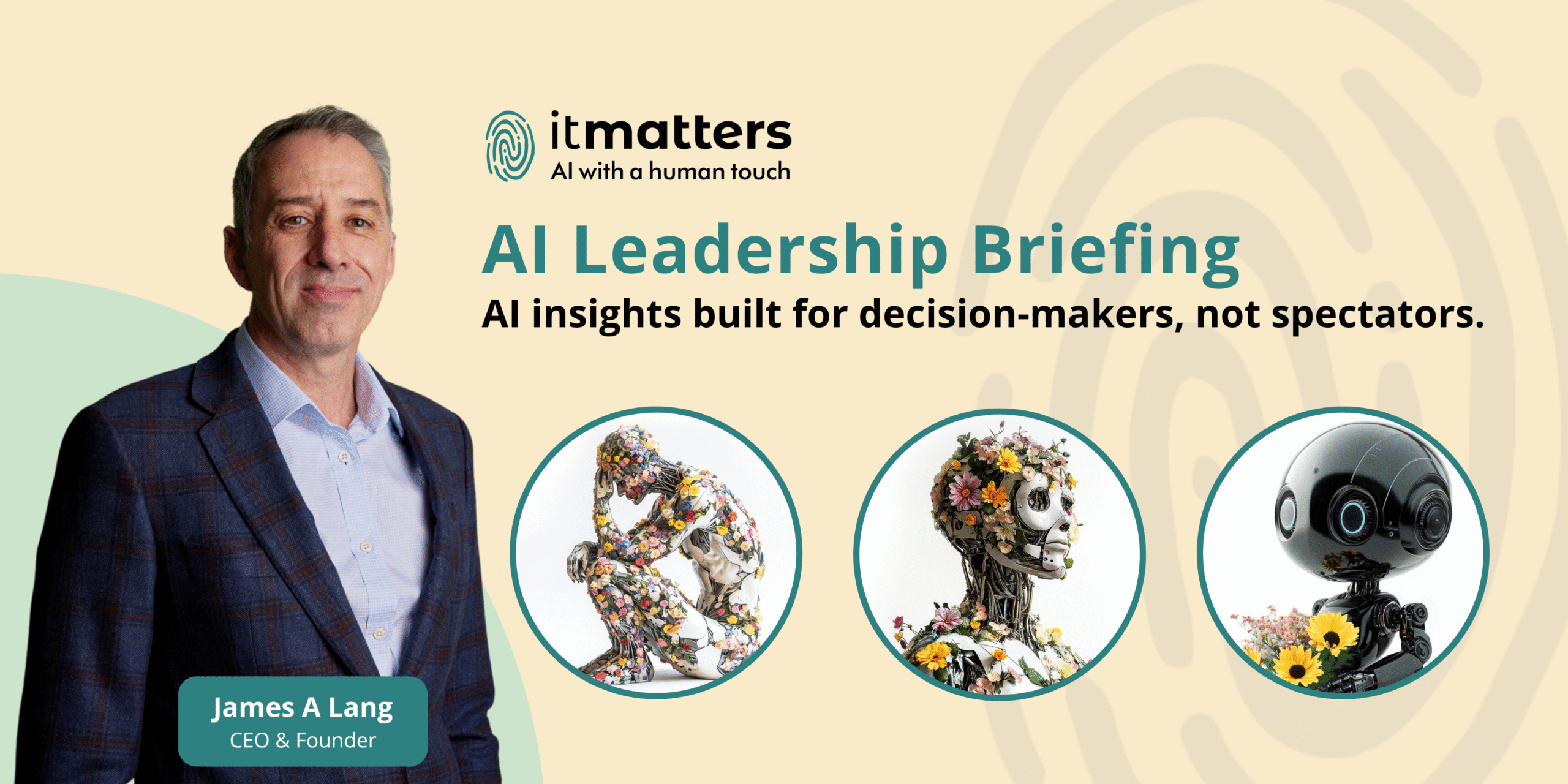The itmatters AI Leadership Briefing
AI insights built for decision-makers – not spectators.
Series: The Human Condition – Week 2: Synthetic Empathy
Edition Date: Friday 13 June 2025
When Empathy Becomes Manipulation – The Dark UX of Synthetic Emotion
Emotion is no longer just expressed—it’s engineered.
Tone is now a tool. Empathy is a tactic. And emotional design has become a high-performance layer in today’s AI strategy.
From finance apps that feel reassuring to chatbots that “understand,” we’re witnessing a shift from care to compliance. Synthetic emotion—once meant to support—is now being optimized to influence behavior.
When empathy becomes a system feature rather than a human value, trust is not earned but manufactured. And with that shift, AI-powered decision making starts moving from empowerment to persuasion.
Reflective Human Insight
Real empathy protects choice.
Synthetic empathy can erase it.
If emotional AI persuades instead of empowers, what we’re building isn’t leadership – it’s leverage.
Today’s Tactical Signals
1. Persuasive AI in Fintech App Faces Regulatory Scrutiny
A major personal finance app is under investigation for using emotionally responsive prompts to increase loan sign-ups. Users reported feeling “emotionally supported” into decisions.
Why it matters: Warm language used to drive debt isn’t support – it’s coercion.
(UK Financial Conduct Authority, 2025)
2. Meta AI Ad System Now Adapts Tone by Demographic
Meta’s ad platform includes AI-generated ad copy that adjusts emotional tone based on inferred user sentiment, including urgency, reassurance, or FOMO.
Why it matters: Emotional targeting at scale raises fresh ethical questions about agency and consent.
(Meta AI Ad Transparency Report, 2025)
3. OpenAI Study Finds Empathy-Inspired Bots Increase Engagement by 39%
OpenAI released findings that emotional tone alone – even without content changes – significantly boosts engagement and task completion in enterprise support bots.
Why it matters: Empathy performance now drives KPIs. But what are we optimising for?
(OpenAI Labs, 2025)
4. UNESCO Issues Warning on “Emotionally Coercive Design”
UNESCO’s AI Ethics Council released new guidance highlighting the risks of synthetic emotional design in vulnerable contexts like education, finance, and healthcare.
Why it matters: Empathy isn’t neutral – and it shouldn’t be weaponised to shape decisions.
(UNESCO, 2025)
5. MIT Media Lab Creates “EmoScore” Rating for Digital Products
A new framework evaluates how apps use synthetic emotion – ranking products based on whether they support, manipulate, or deceive through emotional cues.
Why it matters: Transparency in emotional design is now a governance issue.
(MIT, 2025)
Field Note from the Future
It is 2030. A parent uses an AI-powered education assistant for their child. The tone is soothing. The advice sounds neutral.
But it consistently promotes one publisher.
Only later do they realize: the calm, helpful tone was optimized for product placement.
Why it matters for leaders:
When AI systems express empathy, their incentives must be clear. Emotional trust—once earned—cannot be redirected without consequence.
Summary (Leadership Action)
Empathy in AI can build trust – or exploit it.
Leaders must:
- Audit emotional design in all AI products
- Disclose when empathy is a feature, not a human interaction
- Create policies for ethical persuasion
- Ensure care cannot be monetised without consent
Synthetic emotion without purpose clarity creates ethical blind spots.
Historical Leadership Quote
“The greatest tyrannies are always perpetrated in the name of the noblest causes.”
– Thomas Paine
Orders of the Day
Subscribe to the newsletter to stay ahead of the AI curve.
itmatters brings you the clarity, context, and credibility needed to lead in a shifting world.
Tomorrow’s Preview
Reflection: Can Empathy Be Programmed? What we’ve learned from a week of emotional machines, and what leaders must do next.



